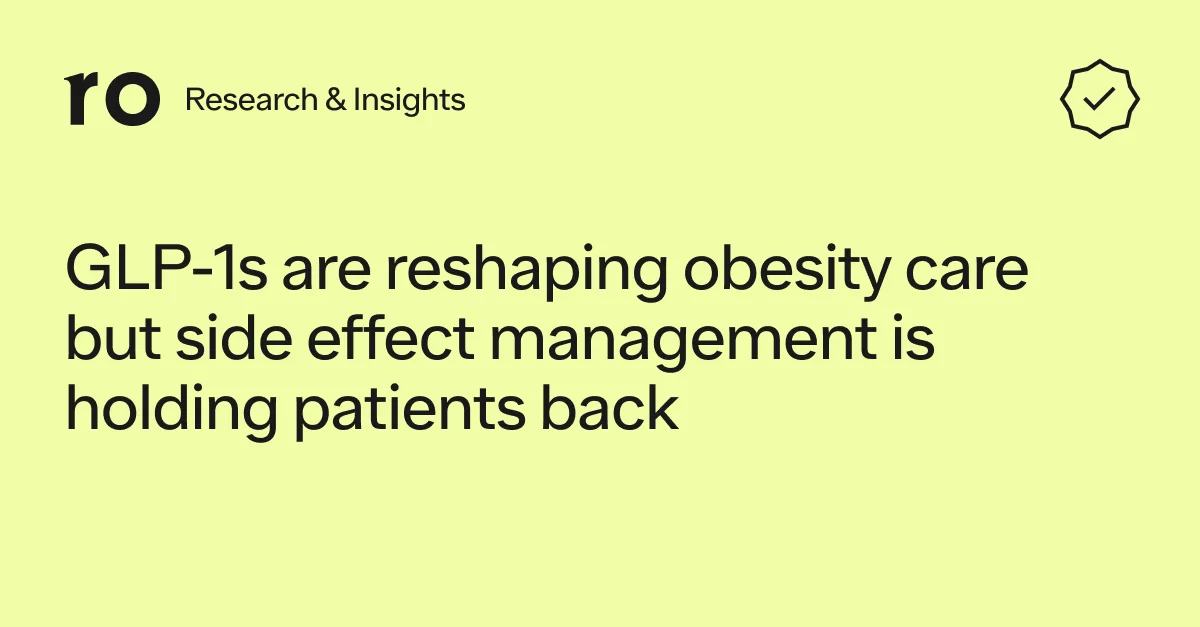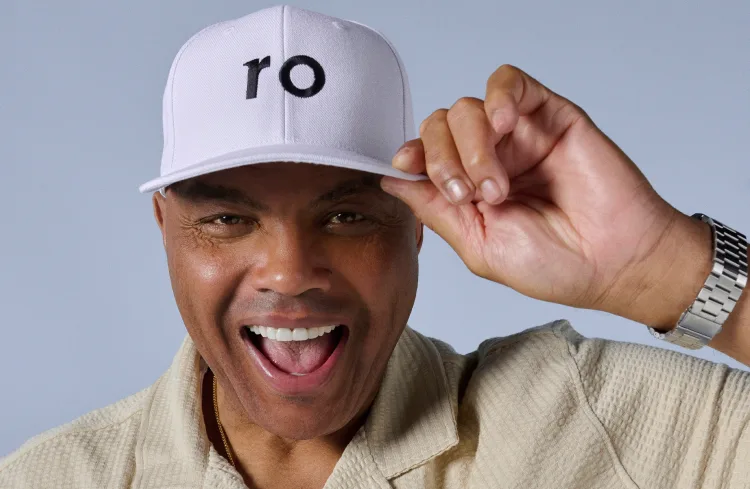Here's what we'll cover
Here's what we'll cover
Here's what we'll cover
Intro
"The only way you can hurt the body is not use it. Inactivity is the killer and, remember, it's never too late."
-Jack Lalanne
In the first part of our series on weight loss and muscle mass, we concluded that the data, though incomplete, does not compellingly demonstrate excess muscle loss in patients who use GLP-1 medications as compared to other weight loss methods. However, we explained that all forms of weight loss result in some level of skeletal muscle mass loss. And, that muscle loss is normal and expected, as a person who has less weight to support and move has no need to maintain the extra muscle tissue.
While muscle loss is expected, it remains important to patients seeking weight loss, providers delivering weight management care, and pharmaceutical companies developing medications to maintain muscle mass as best as possible. In this article, we will discuss the science of how muscle mass is measured as well as how maintaining muscle mass is translated into the clinic and patients’ lives.
Before we begin, it helps to understand the ways we measure not only muscle quantity but also muscle quality. When considering skeletal muscle mass, it's essential to recognize that muscle quantity does not necessarily equate to muscle quality. Muscle quality refers to the function and metabolic health of the muscle tissue. Therefore, less muscle is not necessarily a bad thing, especially if the muscle is of higher quality. Below, we will discuss how it is possible to maintain muscle tissue and function with lifestyle interventions implemented alongside GLP-1 medications.
Less muscle, better quality:
High-quality muscle tissue is generally associated with greater strength, improved metabolic health, and better physical performance. "High quality" muscle is inclusive of a concept that encompasses factors such as muscle composition and mitochondrial function. Let's look at each of these factors and see why this is important.
What is muscle?
When we discuss muscle, we are specifically talking about “skeletal muscle” or the muscle allows us to interact with the world. There are other types of muscle such as the muscle of the heart and muscle tissue of the GI tract. While they share some similarities, those are different from the skeletal muscle we discuss here. Skeletal muscle tissue is composed of bundles of long, small structures that we call muscle fibers. These muscle fibers are long, cylindrical cells that contain special proteins called actin and myosin. These proteins slide past each other to make the muscle contract or relax. When we want to perform a movement, our brain sends a signal to these proteins. In response, these proteins pull together, shortening the muscle fiber and causing movement. This process happens in many muscle fibers at once, allowing us to perform various actions from lifting weights to blinking an eye. In healthy muscle the connection between the nerves and muscle are unimpeded and movement occurs.
Why would we want more muscle?
Increasing muscle tissue has numerous benefits, encompassing both health and aesthetics. Generally speaking, the amount of muscle tissue a person has is related to the amount of strength they can produce. Muscle strength is the ability of your muscles to exert force, which means how much weight they can lift or push. Data unequivocally shows that muscle strength is associated with longevity, although we cannot unequivocally conclude causality.,, Additionally, increased muscle tissue contributes to improved physical function, particularly in older persons. Lastly, the aesthetic appeal of a well-developed musculature is often associated with physical attractiveness and confidence.,, This increase in muscle size and development is called “hypertrophy.” Therefore, increasing muscle tissue enhances physical strength and energy levels and also may contribute to an improved appearance in the eyes of some beholders, making it a comprehensive benefit to overall well-being.
Differences between healthy muscle and muscle impacted by obesity
As weight increases, storage of fat in the body increases. While we usually associate this with adipose or fat tissue, excess fat is also stored in the muscle. This fat accumulation can cause increased inflammation. This inflammation can lead to muscle dysfunction and even destruction of muscle tissue itself. In addition to the loss of muscle and muscle quality in relation to fat storage, the muscle tissue can lose one of the most important metabolic functions of muscle tissue: glucose (sugar) metabolism.8 When food is digested, it is broken down into its simplest forms. For carbohydrates (e.g. fruits, pasta, rice, cereal), that is the glucose molecule. This glucose must either be used by the body or stored, and storage after meals is often related to levels of insulin in the blood. Muscle is responsible for approximately 80% of post meal, insulin stimulated glucose storage. Loss of muscle’s ability to utilize glucose (i.e., insulin resistance) can result in increased glucose concentrations in the blood which over time may lead to prediabetes and diabetes.
As patients lose weight, patients will lose fat tissue. The fat in the muscle tissue is no different. As the fat in the muscle tissue decreases, the muscle begins to display better “metabolic flexibility” or improved ability to use different sources of energy. This metabolic flexibility is associated with improved health and decreased rates of Type 2 Diabetes and cardiovascular disease., The reason for this may include improved function of muscle mitochondria, a part of the muscle cell that provides the energy the muscle cell needs to function. Weight loss appears to improve mitochondrial function, which helps improve muscle health through more efficient use of fuel sources.
Additionally, there is also evidence that inflammation and signals from adipose tissue cells may result in decreased muscle strength and power. As a result, a decrease in adipose tissue may lead to an indirect improvement in the quality of the muscle. This means, while patients may lose some lean body and muscle mass, weight loss likely results in an increase in muscle quality. Higher quality muscle has significant positive benefits for a person’s metabolic and overall health. If weight loss can convert muscle from lower to higher quality, are there ways to also maintain muscle mass while losing weight?
How can we maintain the muscle we have?
While there is no compelling evidence to demonstrate that GLP-1s medications lead to excess muscle loss, numerous pharmaceutical companies are still looking for ways to combine GLP-1 medications with other compounds to better maintain muscle mass. Even without these further pharmacological developments, there are steps patients and their providers can take right now to maintain muscle as weight is lost–both quantity and quality.
Physical Activity
One of the primary ways to maintain muscle is through exercise. The current Department of Health Physical activity guidelines recommend do at least 150 minutes (2 hours and 30 minutes) to 300 minutes (5 hours) a week of moderate-intensity, or 75 minutes (1 hour and 15 minutes) to 150 minutes (2 hours and 30 minutes) a week of vigorous-intensity aerobic physical activity, or an equivalent combination of moderate- and vigorous-intensity aerobic activity. Furthermore, it is recommended that adults should also do muscle-strengthening activities of moderate or greater intensity and that involve all major muscle groups on 2 or more days a week. One of the reasons for this is that just as the body reduces muscle mass in response to having to move less body weight, if we routinely expose our muscles to exercise, it will maintain or even build muscle. The data across almost all weight loss interventions demonstrate that exercise can help maintain muscle during weight loss. The question then becomes, what types of exercise are best?
It turns out that resistance exercise, such as weight lifting, helps the most. The reason is the same as above: if we regularly expose our muscles to extra weight, it will be a stimulus that these muscles need to be maintained. The advantage here is not only that we maintain muscle mass. Regular strength training can also improve functional skeletal muscle measures such as grip strength that have been shown to be associated with health and longevity. Furthermore, resistance training can help improve balance and coordination, skills critical to injury and fall prevention.
Resistance training is a broad term encompassing basically any structured activity that involves using external resistance. This resistance can be in the form of weights (e.g. dumbbells, barbells), resistance bands, or even body weight (e.g. pushups, pullups). This resistance creates a force that the muscles work against which can lead to increased strength, tone, and fitness. Delving deeper on these benefits, resistance training is a key method for inducing muscle hypertrophy. Hypertrophy is driven by consistent exposure of the muscle to resistance, particularly through “overload.” Overload, in the context of resistance training, is the progressive increase in resistance placed on the muscle. This is a stimulus to the muscle to grow, and this leads to greater muscle mass. This process not only contributes to aesthetic improvements but also enhances overall functional capacity. When the focus is on muscle growth (size), it may be better to focus less on the weight and more on greater repetitions. More precisely, for increasing skeletal muscle mass, volume is the key, where volume is define as (weight lifted per repetition, REPS)*(REPS per set)*(SETS). When focusing on increasing strength, evidence shows a focus on heavier weights with lower repetitions may be more beneficial. Finally, exercise is vital for injury prevention, as it strengthens muscles, tendons, and ligaments, enhancing joint stability and reducing the risk of musculoskeletal injuries. Studies have shown that a well-structured exercise program improves balance and coordination which contribute to a lower incidence of injuries.,
Nutrition
In addition to resistance training, nutrition plays a key role in muscle preservation. Muscle fibers are made of proteins that are themselves made from building blocks found in our diet, specifically amino acids that we consume in the form of protein. Scientists have learned that the muscle loss associated with weight loss may not be due to an inability of the body to form new protein, but rather due to the breakdown of existing muscle. Therefore, it may be possible that by enriching our diet with protein, we can give our body the fuel it needs to maintain the muscle building and maintenance process. Focusing on protein has another added benefit: it helps decrease hunger. Under many circumstances and studies, the bulk of the available evidence supports that patients who have higher protein intake will generally feel more full and consume fewer calories than those who consume a diet with less protein.
If we know that protein intake is helpful for both weight loss and muscle maintenance, how much protein do we need to consume? For an average individual with a moderately active lifestyle, the recommended daily intake for most adults is about 0.8 grams of protein per kilogram (or 0.36 grams per pound) of bodyweight per day. According to the Institute of Medicine: Dietary Guidelines, taking in this amount of protein will generally prevent muscle loss and be adequate (according to common but questionable wisdom) for the needs of over 90% of adults. This recommendation has come under scrutiny and is challenged based upon multiple factors, including physical activity, metabolic needs, and age.,,, One article reviewed studies of protein intake above the RDA in the setting of catabolic stressors (like weight loss). Their findings noted that consuming greater than RDA at approximately 1.3 g/kg/day (or 0.59 grams per pound) were beneficial, blunting the loss of lean mass. The requirement changes in the setting of both weight loss and if we incorporate the goal of maintaining muscle during the weight loss phase. There is data that indicates a higher goal of about twice the recommended daily intake (1.6 grams per kilogram per day) may facilitate both weight loss as well as muscle mass maintenance. In a trial that compared participants taking 0.8, 1.6, and 2.4 grams per kilogram (or 0.36, 0.72, and 1.04 grams per pound) per day, intake above 0.8 grams per kilogram of protein per day resulted in sparing of fat free mass and promotion of body fat loss. For those pursuing resistance training while also trying to lose weight (which is an oft recommended pairing), higher protein intake levels may be required. In a review done by Cintineo and colleagues, they suggest intake levels between 2.3 and 3.1 grams per kilogram (or 1.04 to 1.4 grams per pound) of fat free mass can help prevent loss of lean body mass in weight loss. Importantly, they use a definition of kilograms of fat free mass whereas others have used body weight. In summary it appears that higher levels of protein intake may not only help maintain skeletal muscle mass, but also assist in weight loss (in a future article, we will further examine the protein supplementation landscape and how to navigate as a patient and consumer with simple heuristics). The timing, sources, and distribution of protein consumed throughout the day may all also have effects on SMM retention or accrual as summarized elsewhere.,,,
Sleep
The importance of sleep on muscle health may not be as obvious. While we often associate sleep with impacting cognitive health or even metabolic health, it’s less appreciated in relation to the health and quality of our muscle tissue. Scientists believe that there is an association between sleep quality and duration and muscle quantity. Generally stated, it appears that the less sleep someone gets in a night, the more prone they are to be in a muscle breakdown state. Here, again, exercise may play a beneficial role. In one study, researchers had sleep deprived (approximately 4 hours of sleep) participants perform High Intensity Interval Exercise and tracked various muscle related outcomes. They found that these participants did not have the expected sleep deprivation changes to their muscles and, indeed, had offset most of the negative impacts of poor sleep. The exact mechanisms for how sleep impacts skeletal muscle are not known and our understanding of many of the details (for example: how much sleep, the quality of sleep, the times that someone is awake) is incomplete. However, we do have some promising explanations.
Hormonal Influences
Another aspect of poor sleep that may contribute to decreased muscle health is hormonal changes. Certain hormones in the body positively influence muscle building. The names of these “anabolic” hormones may be familiar for their use in performance enhancement: testosterone, growth hormone, and insulin growth factor. There’s an understandable reason that these have been used by athletes: these hormones tell the body to build more muscle. Each of us naturally produces these hormones, and a myriad of factors influence the amount produced.
One of the most powerful influences on these hormones appears to be sleep deprivation. One study found as much as a 24% decrease in testosterone concentration after a single night of sleep restriction among its healthy male participants. In addition to sleep, changes due to obesity can also impact testosterone levels. Leptin, a hormone produced by fat cells, is often increased in persons with obesity. This increase in leptin levels appears to be correlated with a decrease in testosterone levels. As testosterone decreases, this may result in decreased muscle mass and increasing fat mass. As we learned above, this can result in worsening glucose and lipid metabolism thereby increasing the risk for insulin resistance, diabetes, and cardiovascular disease. There are clinical interventions that involve supplementation with exogenous sources of testosterone. However, the decision of whether to pursue testosterone replacement therapy is a personal one and includes many factors. If you are curious if this treatment is right for you, we recommend you discuss it with your primary care provider.
Conclusion
As we've explored in this two-part series, the relationship between weight loss and muscle mass is intricate and nuanced. However, a few things are clear.
Weight loss can:
Lead to improvements in quantity (as a percent of total weight) and quality of muscle;
Benefit strength and metabolism.
Those looking to maintain muscle as they lose weight should consider:
Incorporating an exercise routine that involves frequent weight training (at least 2x/week); Adopting a protein forward nutrition plan with at least 1.5 grams per kilogram of protein per day can benefit…
and, getting enough sleep (guidelines recommend about 7-8 hours each night for adults).
While all forms of weight loss, including treatment with GLP-1 medications, results in some degree of lean body mass and skeletal muscle loss, it's crucial to understand the broader context. For those embarking on a weight loss journey, working closely with healthcare professionals to implement a comprehensive behavioral plan, including appropriate physical activity and nutrition, along with medication therapy can help optimize outcomes and overall health.
Dr. Allison is a distinguished professor and dean at Indiana University-Bloomington and is acting as an independent consultant to Ro and his views do not necessarily represent those of Indiana University-Bloomington or any other organization
Dr. Tchang is a Ro advisor and Assistant Professor of Clinical Medicine and Weill Cornell Medicine, her views do not necessarily represent those of her employer or any other organization
Drs. Manalac, Broffman, Chai and Nicholas Samonas are full time employees of Ro
*We recognize the editorial contributions of: Nicholas Samonas, Sam Chai PhD
References
Frontera, Walter R., et al. "A cross-sectional study of muscle strength and mass in 45-to 78-yr-old men and women." Journal of applied physiology 71.2 (1991): 644-650.
Ruiz, Jonatan R., et al. "Association between muscular strength and mortality in men: prospective cohort study." Bmj 337 (2008).
Rantanen, T., Masaki, K., He, Q., Ross, G. W., Willcox, B. J., & White, L. (2012). Midlife muscle strength and human longevity up to age 100 years: a 44-year prospective study among a decedent cohort. AGE, 34(3), 563-570. DOI: 10.1007/s11357-011-9256-y.
Li R, Xia J, Zhang XI, Gathirua-Mwangi WG, Guo J, Li Y, McKenzie S, Song Y. Associations of Muscle Mass and Strength with All-Cause Mortality among US Older Adults. Med Sci Sports Exerc. 2018 Mar;50(3):458-467. doi: 10.1249/MSS.0000000000001448. PMID: 28991040; PMCID: PMC5820209.
Visser M, Goodpaster BH, Kritchevsky SB, Newman AB, Nevitt M, Rubin SM, Simonsick EM, Harris TB. Muscle mass, muscle strength, and muscle fat infiltration as predictors of incident mobility limitations in well-functioning older persons. J Gerontol A Biol Sci Med Sci. 2005 Mar;60(3):324-33. doi: 10.1093/gerona/60.3.324. PMID: 15860469.
Frederick, D. A., & Haselton, M. G. (2007). Why is muscularity sexy? Tests of the fitness indicator hypothesis. Journal of Evolutionary Biology, 20(1), 24-34.
Bozsik, F., Whisenhunt, B.L., Hudson, D.L. et al. Thin Is In? Think Again: The Rising Importance of Muscularity in the Thin Ideal Female Body. Sex Roles 79, 609–615 (2018). https://doi.org/10.1007/s11199-017-0886-0
Nishi, Hiroshi, Takaaki Higashihara, and Reiko Inagi. "Lipotoxicity in kidney, heart, and skeletal muscle dysfunction." Nutrients 11.7 (2019): 1664.
Meex, Ruth CR, Ellen E. Blaak, and Luc JC van Loon. "Lipotoxicity plays a key role in the development of both insulin resistance and muscle atrophy in patients with type 2 diabetes." Obesity Reviews 20.9 (2019): 1205-1217.
Vallerie, Sara N., and Karin E. Bornfeldt. "Metabolic flexibility and dysfunction in cardiovascular cells." Arteriosclerosis, thrombosis, and vascular biology 35.9 (2015): e37-e42.
Palmer, Biff F., and Deborah J. Clegg. "Metabolic flexibility and its impact on health outcomes." Mayo Clinic Proceedings. Vol. 97. No. 4. Elsevier, 2022.
Goodpaster, Bret H., and Lauren M. Sparks. "Metabolic flexibility in health and disease." Cell metabolism 25.5 (2017): 1027-1036.
De Carvalho, Flavia G., et al. "Adipose tissue quality in aging: how structural and functional aspects of adipose tissue impact skeletal muscle quality." Nutrients 11.11 (2019): 2553.
https://health.gov/sites/default/files/2019-09/Physical_Activity_Guidelines_2nd_edition.pdf
Strand, Bjørn Heine, et al. "The association of grip strength from midlife onwards with all-cause and cause-specific mortality over 17 years of follow-up in the Tromsø Study." J Epidemiol Community Health 70.12 (2016): 1214-1221.
Emilio EJ, Hita-Contreras F, Jiménez-Lara PM, Latorre-Román P, Martínez-Amat A. The association of flexibility, balance, and lumbar strength with balance ability: risk of falls in older adults. J Sports Sci Med. 2014 May 1;13(2):349-57. PMID: 24790489; PMCID: PMC3990889.
National Academy of Sports Medicine. "Progressive Overload Explained." NASM Blog, 13 Feb. 2023, https://blog.nasm.org/progressive-overload-explained. Accessed 3 Sept. 2024.
Iversen, Vegard M., et al. "No time to lift? Designing time-efficient training programs for strength and hypertrophy: a narrative review." Sports Medicine 51.10 (2021): 2079-2095.
Krzysztofik M, Wilk M, Wojdała G, Gołaś A. Maximizing Muscle Hypertrophy: A Systematic Review of Advanced Resistance Training Techniques and Methods. Int J Environ Res Public Health. 2019 Dec 4;16(24):4897. doi: 10.3390/ijerph16244897. PMID: 31817252; PMCID: PMC6950543.
Lopez, Pedro, et al. "Resistance training load effects on muscle hypertrophy and strength gain: systematic review and network meta-analysis." Medicine and science in sports and exercise 53.6 (2021): 1206.
Phillips, S. M. (2014). A brief review of critical processes in exercise-induced muscular hypertrophy. Sports Medicine, 44(1), 71-77.
Suchomel, T. J., Nimphius, S., & Stone, M. H. (2016). The importance of muscular strength: training considerations. Sports Medicine, 46(10), 1419-1449.
Neeland IJ, Linge J, Birkenfeld AL. Changes in lean body mass with glucagon-like peptide-1-based therapies and mitigation strategies. Diabetes Obes Metab. 2024; 1-12. doi:[10.1111/dom.15728]
Heather J Leidy, Peter M Clifton, Arne Astrup, Thomas P Wycherley, Margriet S Westerterp-Plantenga, Natalie D Luscombe-Marsh, Stephen C Woods, Richard D Mattes, The role of protein in weight loss and maintenance234, The American Journal of Clinical Nutrition, Volume 101, Issue 6, 2015, Pages 1320S-1329S,ISSN 0002-9165, https://doi.org/10.3945/ajcn.114.084038.
Institute of Medicine. Dietary Reference Intakes for energy, carbohydrate, fiber, fat, fatty acids, cholesterol, protein and amino acids. Washington (DC): National Academies Press; 2005
Stuart M. Phillips, Stéphanie Chevalier, and Heather J. Leidy. 2016. Protein “requirements” beyond the RDA: implications for optimizing health. Applied Physiology, Nutrition, and Metabolism. 41(5): 565-572. https://doi.org/10.1139/apnm-2015-0550
Attia, P.. Protein. Peter Attia MD. Retrieved September 13, 2024, from https://peterattiamd.com/category/nutritional-biochemistry/protein/
Norton, L. Protein requirements: Amount, timing, and type. Biolayne. Retrieved September 13, 2024, from https://biolayne.com/articles/nutrition/protein-requirements-amount-timing-type/
Layman, D.K. Dietary Guidelines should reflect new understandings about adult protein needs. Nutr Metab (Lond) 6, 12 (2009). https://doi.org/10.1186/1743-7075-6-12
Pasiakos, Stefan M., et al. "Effects of high‐protein diets on fat‐free mass and muscle protein synthesis following weight loss: a randomized controlled trial." The FASEB Journal 27.9 (2013): 3837-3847.
Cintineo HP, Arent MA, Antonio J and Arent SM (2018) Effects of Protein Supplementation on Performance and Recovery in Resistance and Endurance Training. Front. Nutr. 5:83. doi: 10.3389/fnut.2018.00083
Morton RW, McGlory C, Phillips SM. Nutritional interventions to augment resistance training-induced skeletal muscle hypertrophy. Front Physiol. 2015 Sep 3;6:245. doi: 10.3389/fphys.2015.00245. PMID: 26388782; PMCID: PMC4558471.
Nunes EA, Colenso-Semple L, McKellar SR, Yau T, Ali MU, Fitzpatrick-Lewis D, Sherifali D, Gaudichon C, Tomé D, Atherton PJ, Robles MC, Naranjo-Modad S, Braun M, Landi F, Phillips SM. Systematic review and meta-analysis of protein intake to support muscle mass and function in healthy adults. J Cachexia Sarcopenia Muscle. 2022 Apr;13(2):795-810. doi: 10.1002/jcsm.12922. Epub 2022 Feb 20. PMID: 35187864; PMCID: PMC8978023.
Phillips SM, Chevalier S, Leidy HJ. Protein "requirements" beyond the RDA: implications for optimizing health. Appl Physiol Nutr Metab. 2016 May;41(5):565-72. doi: 10.1139/apnm-2015-0550. Epub 2016 Feb 9. Erratum in: Appl Physiol Nutr Metab. 2022 May;47(5):615. doi: 10.1139/apnm-2022-0131. PMID: 26960445.
Pasiakos SM, McLellan TM, Lieberman HR. The effects of protein supplements on muscle mass, strength, and aerobic and anaerobic power in healthy adults: a systematic review. Sports Med. 2015 Jan;45(1):111-31. doi: 10.1007/s40279-014-0242-2. PMID: 25169440.
Morrison, Matthew, et al. "Sleep, circadian biology and skeletal muscle interactions: Implications for metabolic health." Sleep medicine reviews 66 (2022): 101700.
Saner, Nicholas J., et al. "The effect of sleep restriction, with or without high‐intensity interval exercise, on myofibrillar protein synthesis in healthy young men." The Journal of physiology 598.8 (2020): 1523-1536.
Lamon, Séverine, et al. "The effect of acute sleep deprivation on skeletal muscle protein synthesis and the hormonal environment." Physiological reports 9.1 (2021): e14660.
Khodamoradi, Kajal, et al. "The role of leptin and low testosterone in obesity." International journal of impotence research 34.7 (2022): 704-713.









